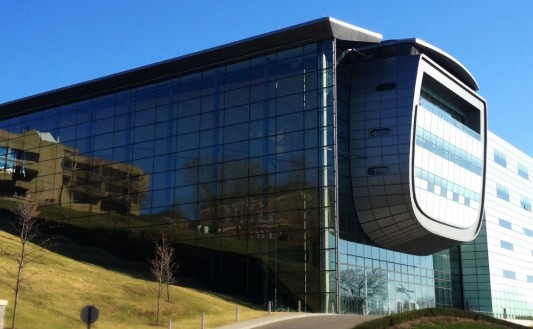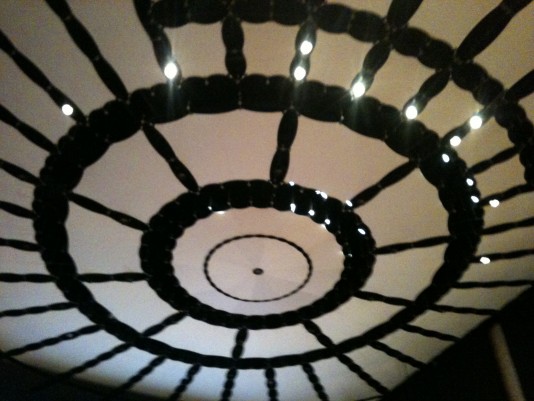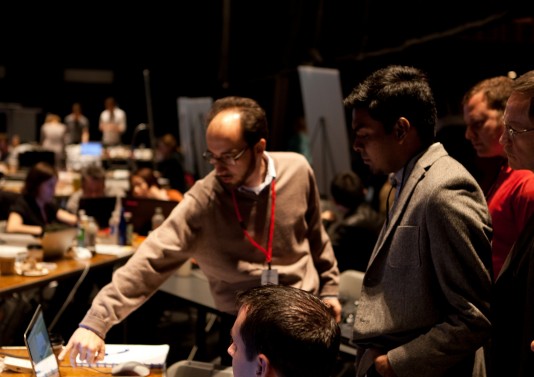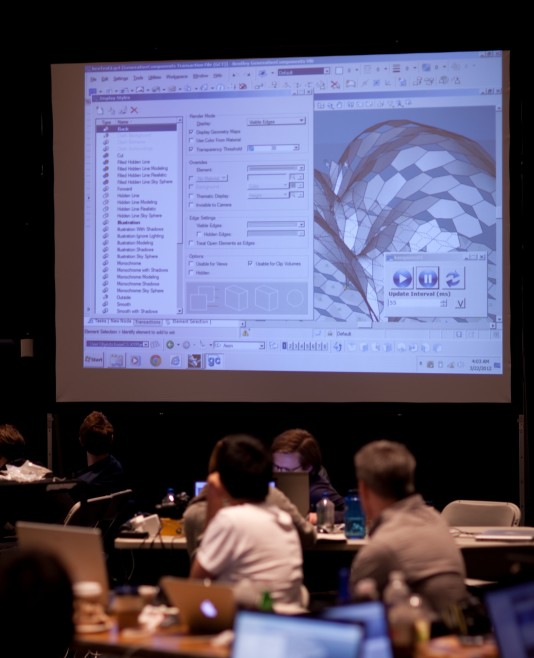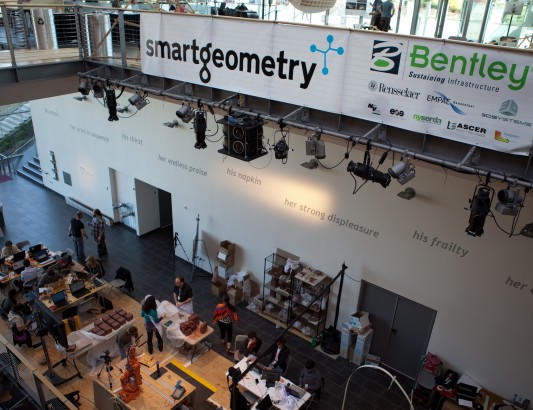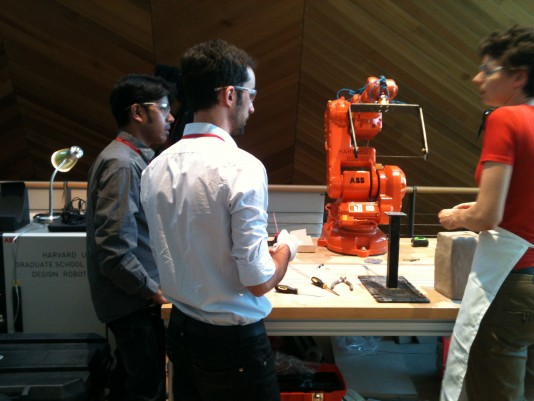The annual conference devoted to pushing the limits of architectural technology explored “Material Intensities” at Rensselaer Polytechnic Institute.
This weekend marked the 9th anniversary of SmartGeometry, the annual conference and symposium on the use of digital technologies for creating the built environment. The original members were users of Generative Components, a parametric design tool from Bentley Systems; the software remains popular among conference attendees, but the focus today is more general. Bentley remains the primary sponsor.
SmartGeometry starts with four days of Cluster Groups, teams of architectural students and professionals working together on specific challenges issued by SmartGeometry activists. The last two days are TalkShop (roundtable discussions on relevant topics) and Symposium (invited keynote speakers and reports from the Cluster groups). This year the Clusters were scattered throughout the EMPAC, the Experimental Media and Performing Arts Center at Rensselaer Polytechnic Institute in Troy, NY, host for this year’s conference. The common theme of this years Cluster work was “Material Intensities.”
I’ll file an article next week about the conference, but for now here are a few photos.
